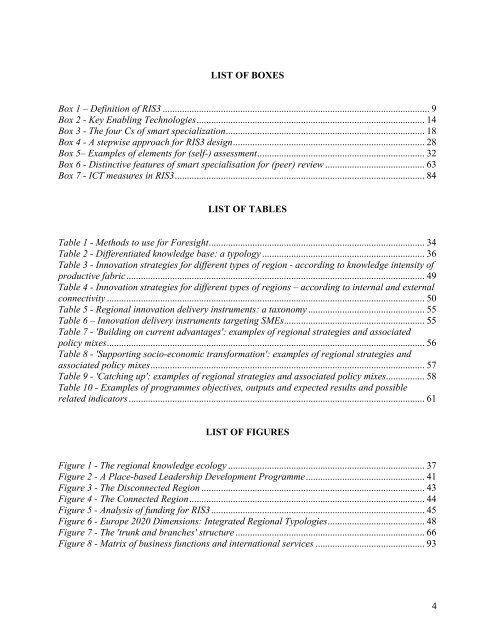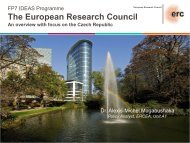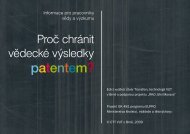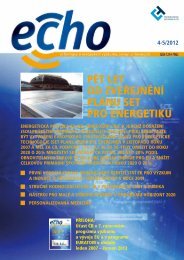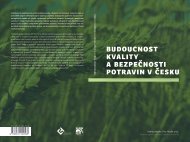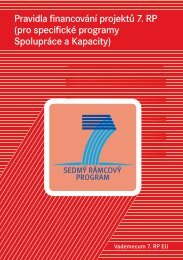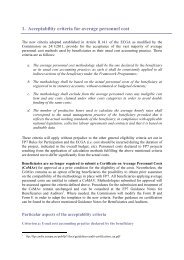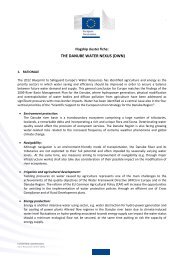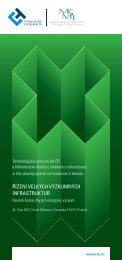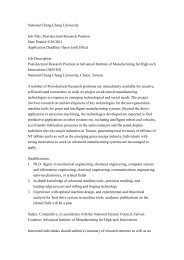Guide to Research and Innovation Strategies for Smart Specialisation
Guide to Research and Innovation Strategies for Smart Specialisation
Guide to Research and Innovation Strategies for Smart Specialisation
Create successful ePaper yourself
Turn your PDF publications into a flip-book with our unique Google optimized e-Paper software.
LIST OF BOXES<br />
Box 1 – Definition of RIS3 .............................................................................................................. 9<br />
Box 2 - Key Enabling Technologies.............................................................................................. 14<br />
Box 3 - The four Cs of smart specialization.................................................................................. 18<br />
Box 4 - A stepwise approach <strong>for</strong> RIS3 design............................................................................... 28<br />
Box 5– Examples of elements <strong>for</strong> (self-) assessment..................................................................... 32<br />
Box 6 - Distinctive features of smart specialisation <strong>for</strong> (peer) review ......................................... 63<br />
Box 7 - ICT measures in RIS3....................................................................................................... 84<br />
LIST OF TABLES<br />
Table 1 - Methods <strong>to</strong> use <strong>for</strong> Foresight......................................................................................... 34<br />
Table 2 - Differentiated knowledge base: a typology ................................................................... 36<br />
Table 3 - <strong>Innovation</strong> strategies <strong>for</strong> different types of region - according <strong>to</strong> knowledge intensity of<br />
productive fabric........................................................................................................................... 49<br />
Table 4 - <strong>Innovation</strong> strategies <strong>for</strong> different types of regions – according <strong>to</strong> internal <strong>and</strong> external<br />
connectivity ................................................................................................................................... 50<br />
Table 5 - Regional innovation delivery instruments: a taxonomy ................................................ 55<br />
Table 6 – <strong>Innovation</strong> delivery instruments targeting SMEs.......................................................... 55<br />
Table 7 - 'Building on current advantages': examples of regional strategies <strong>and</strong> associated<br />
policy mixes................................................................................................................................... 56<br />
Table 8 - 'Supporting socio-economic trans<strong>for</strong>mation': examples of regional strategies <strong>and</strong><br />
associated policy mixes................................................................................................................. 57<br />
Table 9 - 'Catching up': examples of regional strategies <strong>and</strong> associated policy mixes................ 58<br />
Table 10 - Examples of programmes objectives, outputs <strong>and</strong> expected results <strong>and</strong> possible<br />
related indica<strong>to</strong>rs.......................................................................................................................... 61<br />
LIST OF FIGURES<br />
Figure 1 - The regional knowledge ecology ................................................................................. 37<br />
Figure 2 - A Place-based Leadership Development Programme................................................. 41<br />
Figure 3 - The Disconnected Region ............................................................................................ 43<br />
Figure 4 - The Connected Region................................................................................................. 44<br />
Figure 5 - Analysis of funding <strong>for</strong> RIS3........................................................................................ 45<br />
Figure 6 - Europe 2020 Dimensions: Integrated Regional Typologies........................................ 48<br />
Figure 7 - The 'trunk <strong>and</strong> branches' structure .............................................................................. 66<br />
Figure 8 - Matrix of business functions <strong>and</strong> international services ............................................. 93<br />
4


